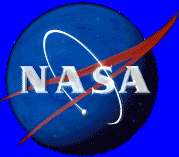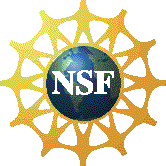TOWARD AN INTERNATIONAL VIRTUAL OBSERVATORY
Scientific Motivation, Roadmap for Development and Current Status

June 10 - 14, 2002
Garching, Germany
A virtual observatory (VO) is a collection of interoperating data archives and software tools which utilize the internet to form a scientific research environment in which astronomical research programs can be conducted. In much the same way as a real observatory consists of telescopes, each with a collection of unique astronomical instruments, the VO consists of a collection of data centres each with unique collections of astronomical data, software systems and processing capabilities.
The need for the development of a VO is driven by two key factors. Firstly, there is an explosion in the size of astronomical data sets delivered by new large facilities. The processing and storage capabilities necessary for astronomers to analyse and explore the forthcoming data sets will greatly exceed the capabilities of the types of desktop systems astronomers currently have available to them. Secondly, a potential scientific gold mine remains unexplored and underexploited because large data sets in astronomy are unconnected. If large surveys and catalogues could be joined into a uniform and interoperating "digital universe", entire new areas of astronomical research would become feasible.
Major virtual observatory initiatives were launched in Europe and in the USA in the fall of 2001. The Astrophysical Virtual Observatory (AVO) Project, funded by the European Commission, is a three year study for the design and implementation of a virtual observatory for European astronomy. AstroGrid is a project aimed at building a data-grid for UK astronomy, which will form the UK contribution to a global Virtual Observatory. In the USA, the National Virtual Observatory (NVO) is the new project funded by a five-year Information Technology Research grant from the National Science Foundation.
This meeting will bring together a diverse community of scientists to discuss the relevant scientific and technological issues necessary to fully exploit the potential of the Virtual Observatory.
 THE MEETING HAS BEEN CONDUCTED SUCCESSFULLY
THE MEETING HAS BEEN CONDUCTED SUCCESSFULLY
Post-Meeting Important Information:
Please note that source files for a number of oral and poster presentations are available at the Program and Poster links below.
 List of Participants List of Participants |
 Final Program Final Program |
 Poster List Poster List |
 Instructions for Authors of Contributions to the Conference Proceedings Instructions for Authors of Contributions to the Conference Proceedings |
||
Invited Speakers:
P. Benvenuti (ESA/ST-ECF), L. DaCosta (ESO), D. De Young (NOAO), G. Djorgovski (Caltech), D. Egret (CDS), G. Fabbiano (CfA), R. Fosbury (ESA/ST-ECF), G. Gilmore (Cambridge), J. Gray (Microsoft), R. R. Hanisch (STScI), D. Helfand (Columbia), K. Kuijken (Groningen), A. Lawrence (Edinburgh), G. Longo (Napoli), R. Moore (SDSC), J.P. Ostriker (Cambridge), B. Paczynski (Princeton), P.J.E. Peebles (Princeton), P. Quinn (ESO), A. Szalay (JHU), S. White (MPA-Garching), P. Wilkinson (Jodrell Bank), R. Williams (Caltech)
Selected Topics:
 Management, Visualisation and Analysis of Large Astronomical Datasets Management, Visualisation and Analysis of Large Astronomical Datasets |
 Large Area Astronomical Surveys Large Area Astronomical Surveys |
 GRID Computing and Resources for Problem-Solving and Data Sharing GRID Computing and Resources for Problem-Solving and Data Sharing |
 Multi-wavelength Astrophysics Multi-wavelength Astrophysics |
 Interoperability of Distributed Archives Interoperability of Distributed Archives |
 Massive Variability Searches Massive Variability Searches |
 Knowledge Discovery in Terabytes of Federated Data Knowledge Discovery in Terabytes of Federated Data |
 Reconstruction and Analysis of Astronomical Images Reconstruction and Analysis of Astronomical Images |
 High Throughput Automatic Pipeline Processing High Throughput Automatic Pipeline Processing |
 Astrophysical Models and Cosmological Simulations Astrophysical Models and Cosmological Simulations |
Scientific Organising Committee:
K.M. Górski (Chair), C. Alcock, D. De Young, G. Djorgovski, D. Egret, G. Fabbiano, S. Garrington, G. Gilmore, R. Hanisch, A. Lawrence, G. Longo, Y. Mellier, R. Moore, E. Schreier, R. Williams, S. White
Local Organizing Committee:
K.M. Górski, P. Benvenuti, M. Peltzer, P. Quinn, B. Sjoeberg
For further information please contact:
voconf@eso.org
| Last modified: June 27, 2002 |     |
